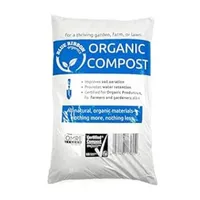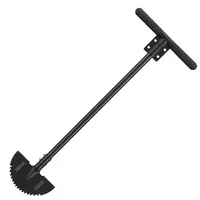5 ways to protect your lawn from flooding — tips from garden experts
Here’s how to protect your lawn from flooding
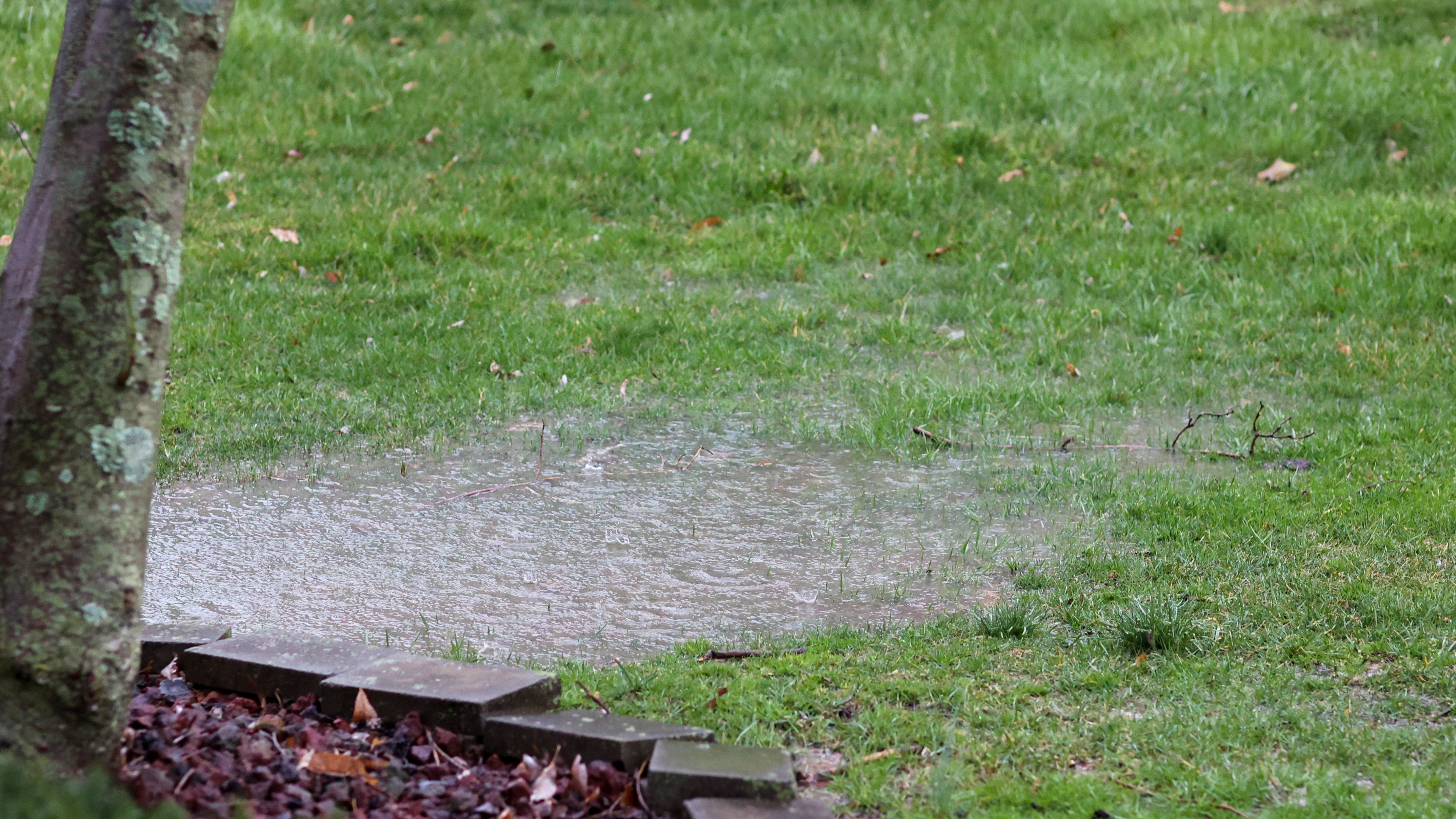
If you live in a zone that is prone to hurricanes or flash floods, your lawn and yard is at an increasing risk of being flooded. This is especially the case if there are shallow areas in your yard that can easily collect excess rainwater, causing damage to your lush, green grass.
Excess water can not only ruin your healthy grass, resulting in a waterlogged lawn, but it can encourage the spread of algae, moss, dandelions and various soil diseases. That’s why it’s important to take preventative measures to protect your lawn and plants before it gets to that. We ask the experts how to prevent your lawn from flooding, and their top tips.
1. Check drainage points
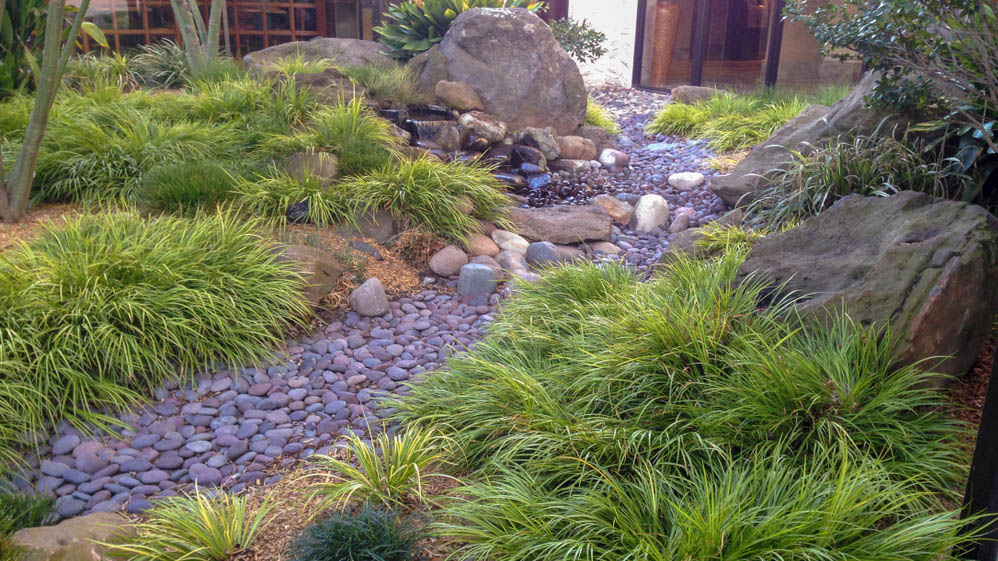
One major cause for flooding is not having sufficient drainage in your yard, which can encourage pools of water. “Proper drainage ensures that water flows away from your lawn or will drain quickly, to prevent waterlogging,” says Brian Davenport, Co-Founder of The Solar Centre. “Clogged or poorly designed drainage systems can lead to standing water, which will drown grass roots and promote fungal growth.
“By inspecting and clearing drainage points like gutters and drains and checking soil isn’t compacted, you can fix any blockages and problems before heavy rain and flooding begins. You may also consider installing trenches to redirect flood water or building swales, which are shallow sloped ditches that will channel water away from areas you want to protect.”
Additionally, if your lawn tends to suffer badly from excess water, you may need to call in the professionals to install a French drain. Essentially, a French drain is a pipe laid within the ground that allows water that pools around your yard to drain away from the property.
“One of the best things you can do to help prevent damage from a flood to your lawn and patio, is to invest in drainage,” adds Steven Walley, patio and paving expert from London Stone, “When laying a fresh lawn, add a draining system underneath, to help prevent it from becoming waterlogged."
You can also add a drainage system to your porcelain paving slabs before installation. Alternatively, having a mixture of surfaces in your garden can help reduce the impact of the flood on your lawn. Ensuring a mix of permeable stoned areas, grassy lawns and impermeable surfaces helps to stop your lawn from bearing the full brunt of the flood.”
Get instant access to breaking news, the hottest reviews, great deals and helpful tips.
2. Add mulch
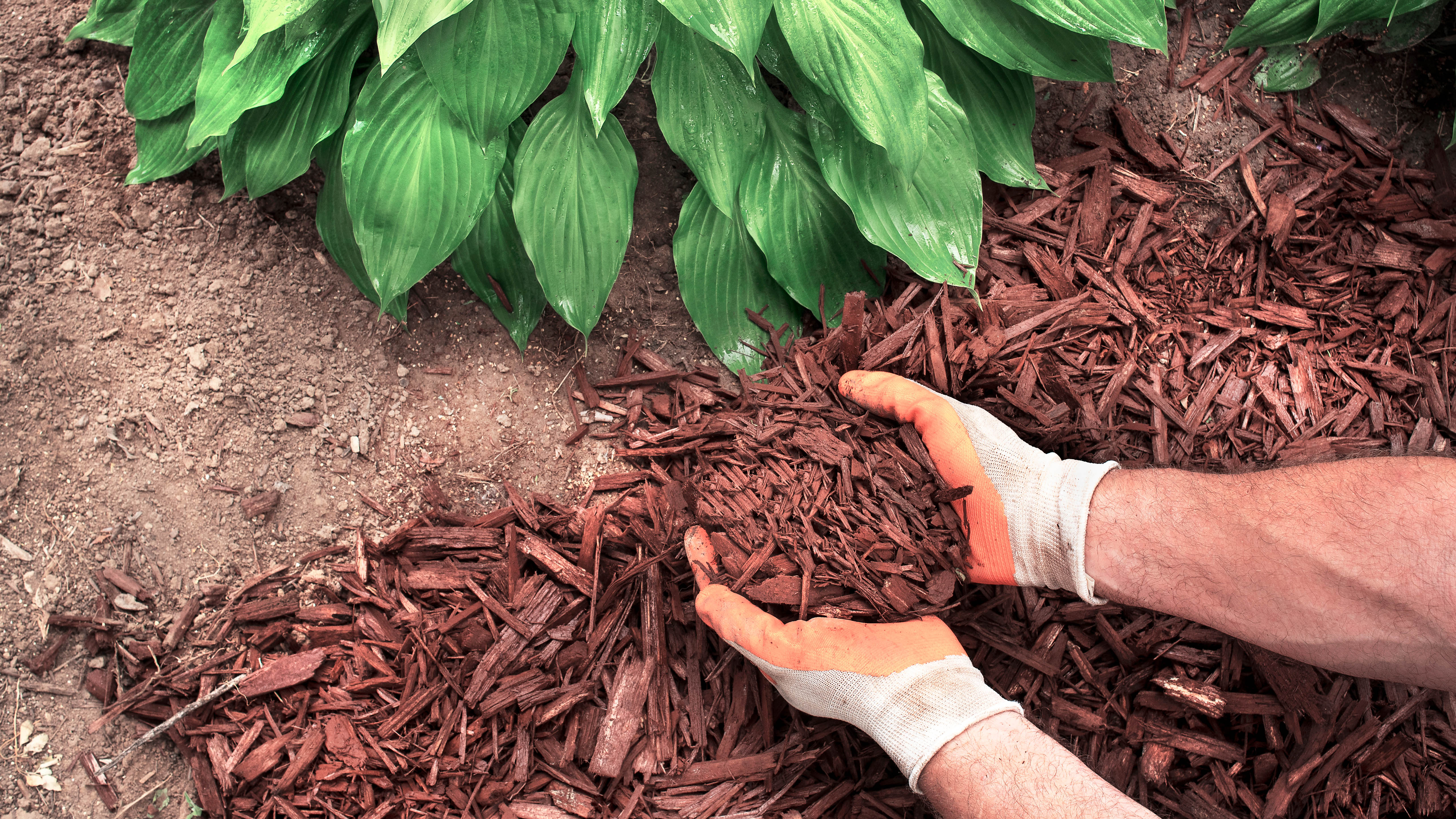
If you only have certain areas of your lawn affected, you can add a layer of mulch, compost or gardening sharp sand along the surface.
“Mulch, when put on soil, not only improves its health but also aids the retention of moisture,” advises Joshua Houston, Garden Expert at Household Quotes. “This is particularly beneficial during heavy rain as it decreases the likelihood of flooding. Not only this, it also stops topsoils from being washed away in the event of very bad weather.”
Typically, there are two types of mulch — organic and synthetic. The first is natural, organic matter, made from yard waste such as leaves, straw, bark or grass. While synthetic is man-made materials, such as plastic and rubber, or it can be made up of stone and gravel. Both types are ideal for locking moisture into the soil as well as retaining the temperature and preventing weeds, as long as you know when to replace mulch and why it’s essential.
Blue Ribbon Organics Compost (7.9 gallons): $33 @ Amazon
This organic compost comes highly reviewed and will help improve soil structure, aeration and water retention. It is also OMRI Certified for organic use. Key nutrients include nitrogen, phosphorous, potassium, calcium and magnesium.
3. Remove debris on your lawn
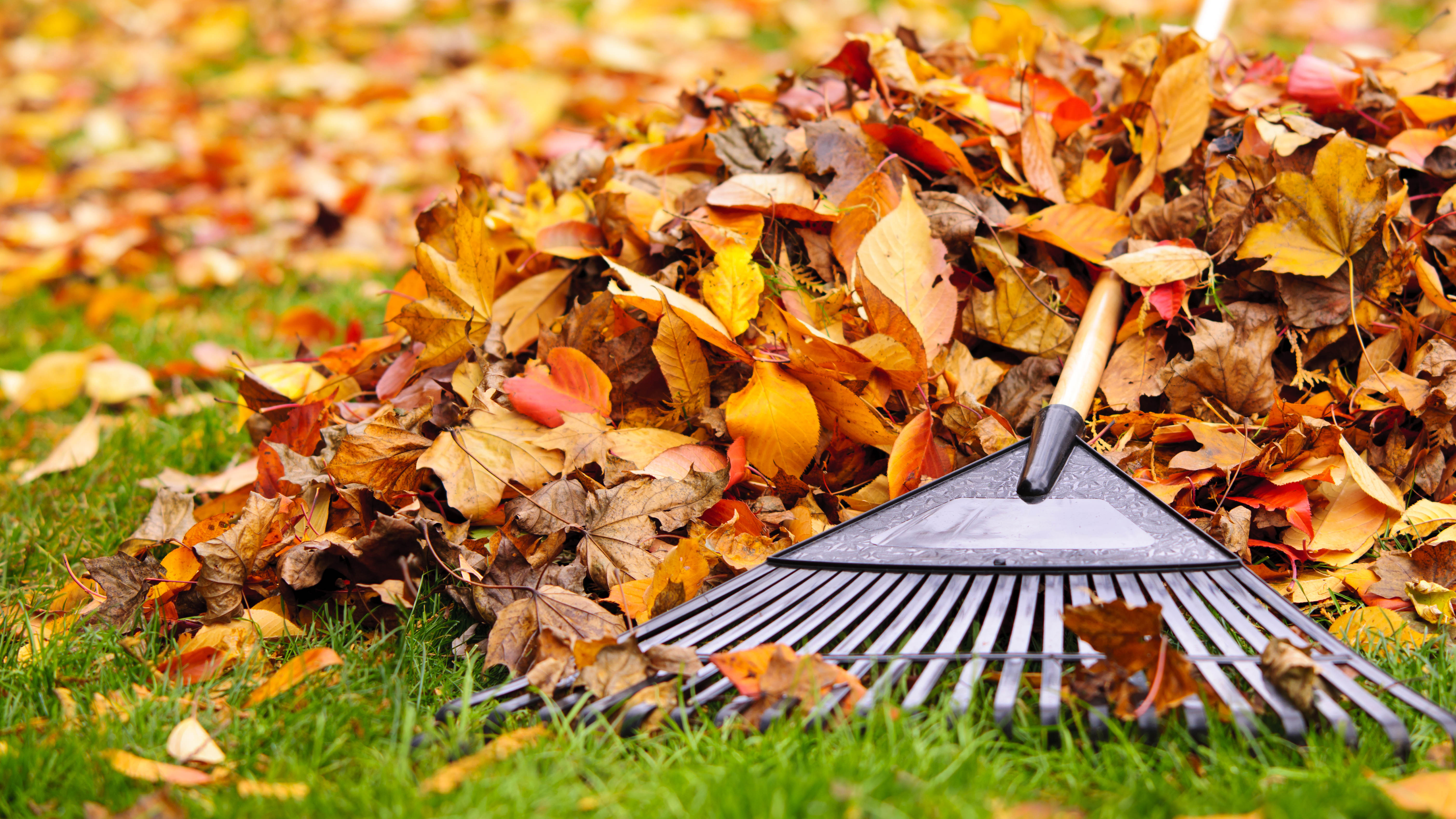
During bad weather, it’s inevitable to deal with yard debris strewn all over your lawn, and we don’t often have the time to clear it. However, it’s vital to remove lawn debris as soon as possible. “Floodwater will often leave behind leaves, branches, moss and other materials that can smother grass and block sunlight and air circulation — all of which are essential for recovery and growth,” states Davenport. “Debris can also trap moisture and create an ideal environment for fungal disease and pests, so promptly removing it is essential to prevent additional damage and allow the grass to dry out.”
While doing so, experts advise to limit your movements on a flooded lawn, as walking on a waterlogged lawn could cause more harm. “After a flood, make sure to remove any debris or sediment left behind, just be mindful to avoid soil compaction (walking on your lawn) as it may lead to further drainage problems,” adds Ken Kohlmann, co-founder and VP of Yarbo. “If there’s any stubborn pockets of deep water leftover, use a pump to remove them as quickly as possible. It’s also important to adjust your watering schedule accordingly, to account for the natural rainfall.”
PoPoHoser Half Moon Hand Lawn Edger: $19 @ Amazon
Neaten up your lawn with this manual saw-tooth lawn edger that will cut through turf to leave a clean border. The lawn edger is 37-inches long, allowing you to use it from a standing position, and has a cushioned ergonomic handle for comfort. The lawn edger is rust and weather resistant. This product is self assembly.
4. Create a raised seating area

If you enjoy sitting in the yard or hosting guests, it can be frustrating when you can’t access your seating area due to a flood. Experts advise adding a raised seating area to avoid this. “Regardless of what preventative measures you take, you won’t be able to stop the rain from falling, which may lead to flooding of your lawn and garden,” says Jamie Jones, property expert and founder of Open Space Concepts. “Adding an outhouse or a raised seating area underneath a pergola means you can still make the most of your garden when it is flooded or after the flood remnants have been cleared away.
“Keeping an eye on weather warnings will mean you know when a flood is likely to happen, which can allow you to prepare by aerating your lawn and removing furniture and potted plants from your garden.”
5. Add water-resilient plants
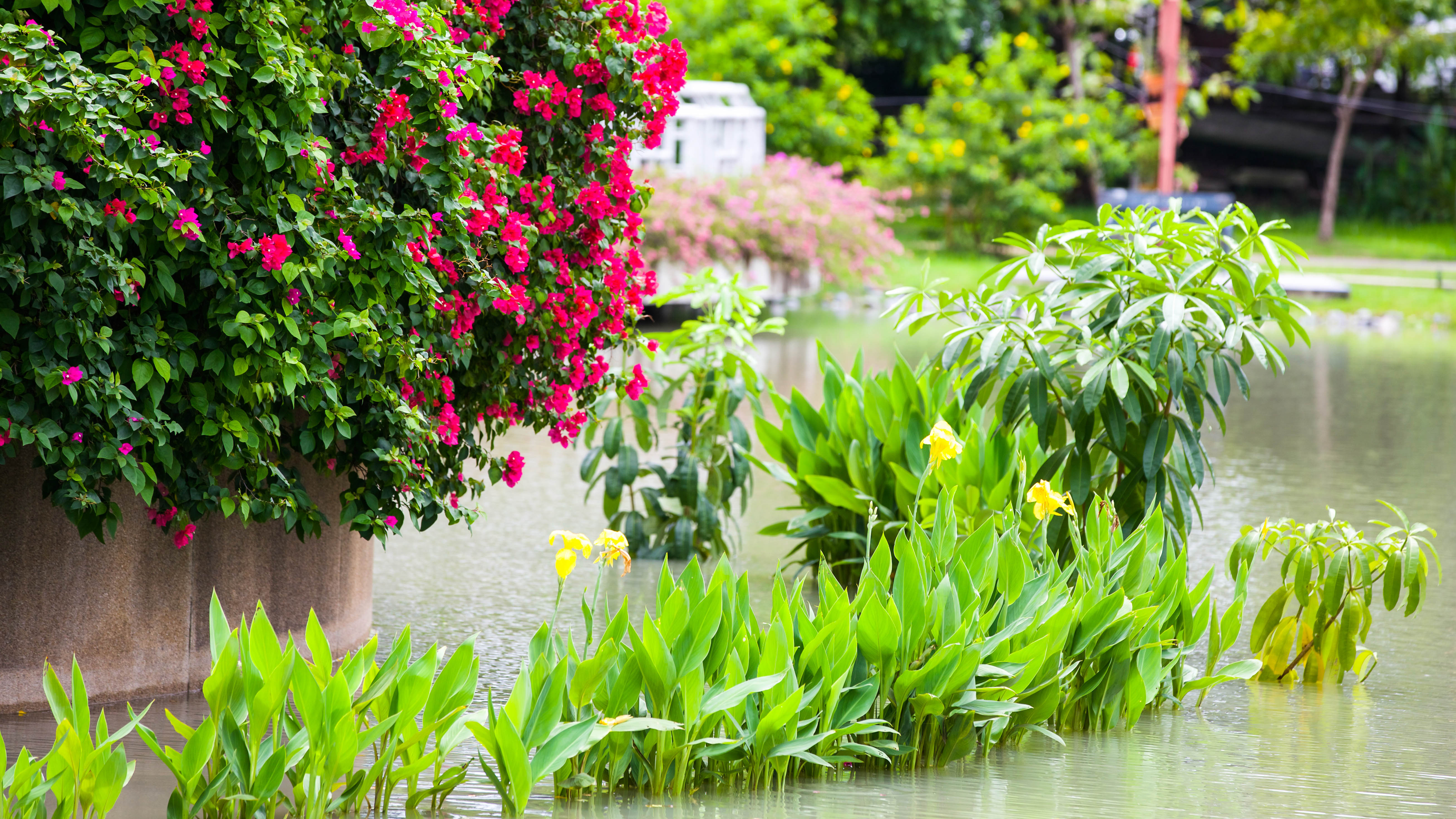
In addition, if you’re worried that your favorite, vibrant plants won’t survive the wet conditions, you can opt for water-resilient plants to suit your zone. Such flood-tolerant plants can soak up moisture and prevent runoff into other areas of your yard, helping to protect your lawn from waterlogging.
“Some plants are more water-resilient than others, which means the plant can survive in extremely wet weather, along with being able to absorb more water,” advises Houston. “Examples of water-resilient plants include; lavender, sedum and verbena.”
In any case, it’s always best to step up your lawn health and care routine. “Healthy grass is far more resilient than damaged grass, so fertilizing it will provide essential nutrients that boost growth,” advises Davenport. “Frequent lawn mowing will also help with strong root development, as removing damaged grass tips allows sunlight to reach the lower parts of grass stems for healthier growth.
Meanwhile, deep watering will help to restore moisture balance without over-saturating soil. And aerating the lawn will improve soil structure to allow oxygen to reach the roots.”
For more top tips, check out our ultimate lawn care guide — essential tips and tricks for getting the perfect lawn.
More from Tom's Guide
- 5 lawncare tips to beat the frost
- How to revive dead grass — 7 tips to make your lawn green again
- 7 signs that you’re cutting your grass too short

As the Homes Content Editor, Cynthia Lawrence covers all things homes, interior decorating, and garden-related. She has a wealth of editorial experience testing the latest, ‘must-have’ home appliances, writing buying guides and the handy ‘how to’ features.
Her work has been published in various titles including, T3, Top Ten Reviews, Ideal Home, Real Homes, Livingetc. and House Beautiful, amongst many.
With a rather unhealthy obsession for all things homes and interiors, she also has an interior design blog for style inspiration and savvy storage solutions (get rid of that clutter!). When she’s not testing cool products, she’ll be searching online for more decor ideas to spruce up her family home or looking for a great bargain!
